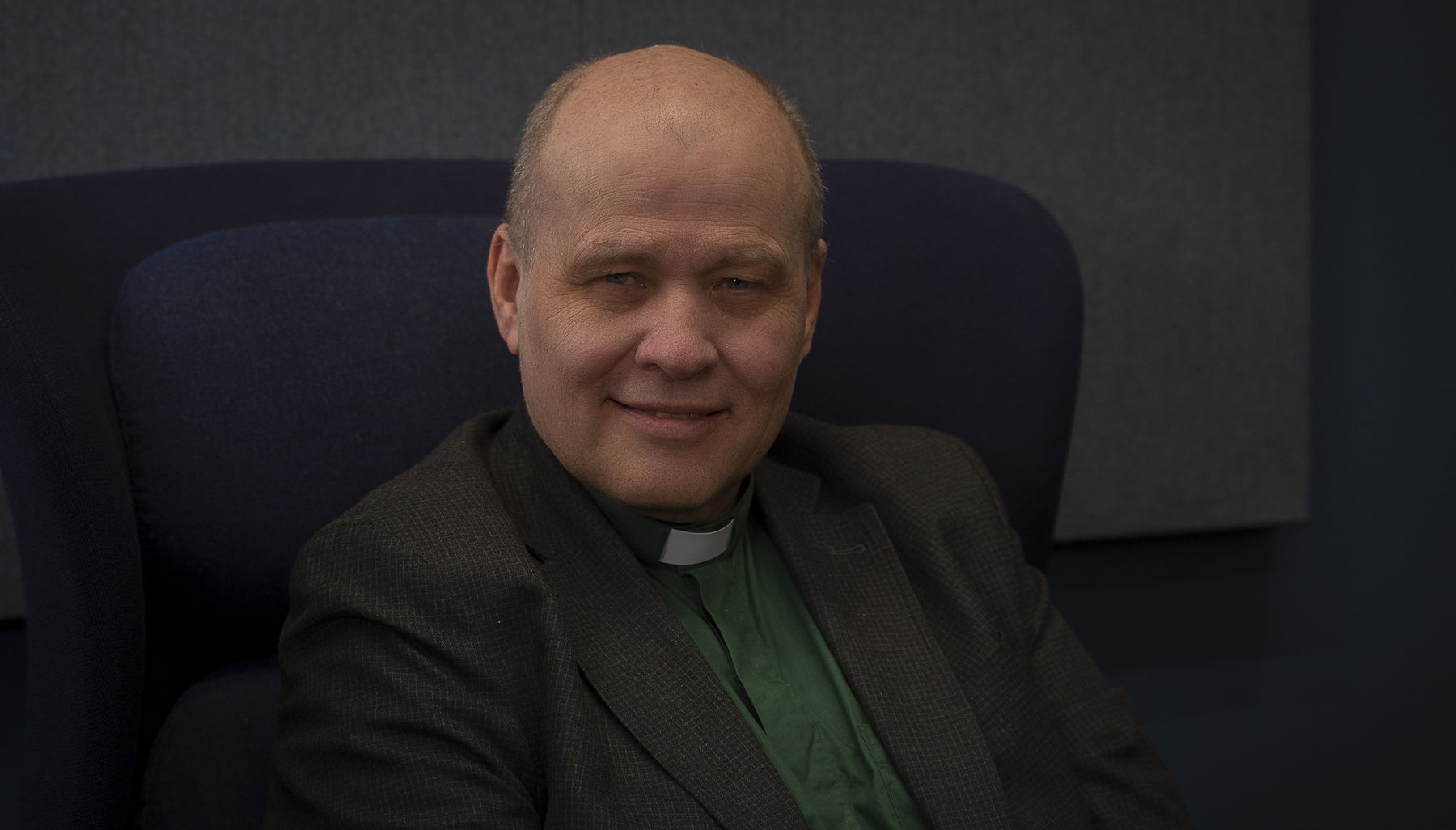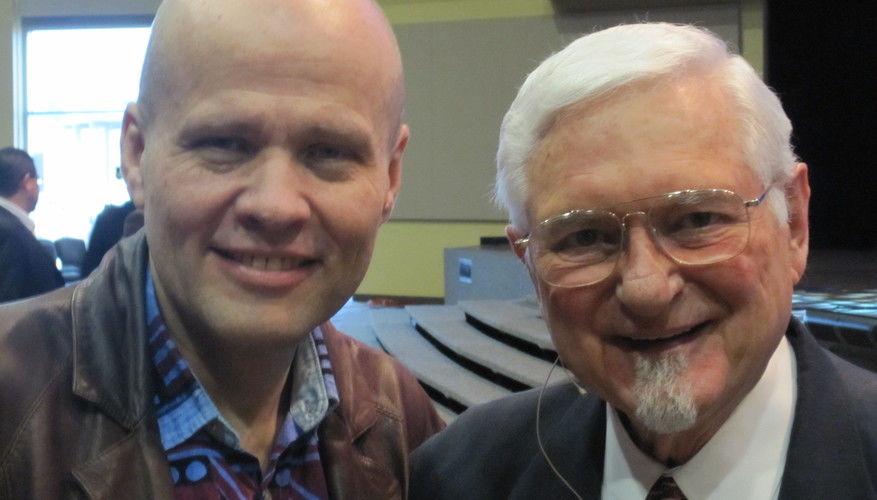
The New Apostolic Reformation
 Jan-Aage Torp & Peter Wagner in 2010 (photo: Mike Jacobs)
Jan-Aage Torp & Peter Wagner in 2010 (photo: Mike Jacobs)
It was gratifying to read Dagen's interview with associate professor Bjørn Wang about the New Apostolic Reformation (NAR). For once, a critic in Norway was objective and constructive in his assessments. It lays the foundation for fruitful conversations.
Wang said, among other things: - I was a little surprised that Torp says that they belong to the NAR movement. It is more common among charismatics in Norway to question what NAR actually is. They perceive that NAR is used as a label for charismatic theology that one should distance oneself from.
Here is my first response ever to the often very unfounded and slanderous criticism of NAR in Norway.
The Church Growth Chair
It was Donald McGavran (1897–1990), a church growth professor at Fuller Theological Seminary – School of World Mission, who introduced me to the teachings of C. Peter Wagner (1930-2016), when McGavran spoke at the Norwegian Lausanne Committee conference at Danvik in Drammen in 1978.
Three years later, I started my studies at Fuller in Pasadena, California, where Wagner had taken over McGavran’s church growth chair.
Wagner’s Group
I was so blessed that I was immediately invited to the Peter & Doris Wagner Fellowship Group.
I was able to follow his journey from the sociological expert on numerical church growth to initiating the worldwide prayer initiative for the nations in 1980, known as the 10/40 Window, which was replaced by the 40/70 Window in 1990. These were two 10-year strategic initiatives that brought together Christians around the world.
John Wimber and Cindy Jacobs
From 1983 to 1990, Wagner and I sat together on the International Lausanne Committee for World Evangelism, led by Billy Graham. There I witnessed the differences between theologians John Stott and Peter Beyerhaus on the one hand, and the pragmatist Peter Wagner on the other.
At Lausanne II in Manila in 1989, these differences became apparent. First because of the pragmatism of the prayer movement, but even more so because Wagner introduced Vineyard founder John Wimber as a speaker in his sessions.
Here, exorcism, healing, and prophetic revelation were practiced unashamedly.
During the frequent meetings of the Norwegian delegation in Manila – there were 60 of us – our dear bishops, general secretaries, and theologians were outraged by Wagner and Wimber, and equally so by the newcomer Cindy Jacobs who introduced the concepts of «strategic prayer» and «spiritual warfare».
Cindy's entry even became provocative to John Wimber, who called her «the greatest danger to the charismatic revival ever». But Wagner did not let himself be influenced, and in 1991 chose to prioritize the collaboration with Cindy Jacobs, thus the break between Wagner and his student Wimber was a fact.
Since then, I worked closely with Peter Wagner in the USA, Europe and other parts of the world, until his death in 2016. He was my guest four times in Norway in 1985, 2001, 2002 and 2003.
NAR
Peter Wagner's work to define, develop and promote the New Apostolic Reformation (NAR) began in the mid-1990s when he held conferences on the apostolic ministry in the USA and Singapore.
I attended the conference in Colorado Springs in 1998 where the concepts began to come into place.
What brought us together was that this movement within charismatic Christianity emphasizes the restoration of apostolic and prophetic offices in the modern church.
Wagner coined the term NAR in 2001. He authored several books and articles describing its principles, historical development, and implications for contemporary Christianity.
Radical Revival
Wagner described NAR as a profound change in the structure and practice of the church, calling it «the most radical change in the way of doing church since the Protestant Reformation».
In his writings, he defined it this way: «My term for the new wineskin that God has given these churches is ‘the New Apostolic Reformation.’ It is a ‘reformation’ because we are currently witnessing the most radical change in the way of ‘doing church’ since the Protestant Reformation. It is ‘apostolic’ because the recognition of the gift and office of apostle is the most radical of a long list of changes from the old wineskin. And it is ‘new’ to distinguish it from several older traditional church groups that have incorporated the term ‘apostolic’ into their official names».
He emphasized that «the central focus of this reformation is the resurgence of apostles in the church», and saw apostles as essential to governing the church, along with prophets, as Ephesians 2:20 describes.
In books such as «Churchquake: How the New Apostolic Reformation Is Shaking Up the Church» (1999), Wagner portrayed NAR as «a revolution taking place in the church—an extraordinary work of God that is changing the shape of Christianity around the world».
Similarly, in «The New Apostolic Churches» (1998), he argued for «rediscovering the New Testament model of leadership», claiming that it is «God's desire for the church today», with a focus on apostolic authority over traditional denominational structures.
Origins
Wagner traced NAR's origins to early 20th-century movements, writing:
«We can trace the roots of the New Apostolic Reformation back as far as 1900, when the African independent church movement was first launched.
The Chinese house church movement that began around 1975, and the Latin American grassroots church movement that emerged around 1980, were also among the same spiritual phenomena on different continents.
In the United States, the independent charismatic churches, dating back to after 1960, were the most immediate precursors to what is now called the New Apostolic Reformation».
He outlined a timeline of spiritual activations: Intercessors in the 1970s, prophets in the 1980s, and apostles in the 1990s, explaining that intercessors «open the way between heaven and earth», prophets receive God’s revelation, and apostles implement it strategically.
He highlighted NAR’s rapid expansion, noting in «Dominion!» (2008) that it represents the largest non-Catholic Christian mega-block, with over 432 million adherents in the early 2000s, growing faster than Islam and expected to account for almost 50% of non-Catholic Christianity by 2025.
The Second Apostolic Age
A central concept in Wagner's writings is the «Second Apostolic Age», which he declared began in 2001:
«The Second Apostolic Age began in the year 2001. That does not mean that there were no apostles and prophets before, it just means that the body of Christ had not recognized them and released them from the office they held so that they could function as apostles and prophets in the foundations of the church. But we have it now, I believe we reached our critical mass in the year 2001».
This marked the restoration of apostolic governance after centuries of its absence since the early church.
Social Transformation
Wagner's later works, such as «Spheres of Authority: Apostles in Today's Church» (2002) and «This Changes Everything: How God Can Transform Your Mind and Change Your Life» (2013), further developed how NAR promotes social transformation through apostolic leadership, rejecting human agendas in favor of divine reformation.
He viewed NAR not as a denomination but as a «network in the apostolic-prophetic movement», aimed at equipping believers for spiritual warfare and influence in society and culture.
